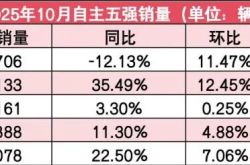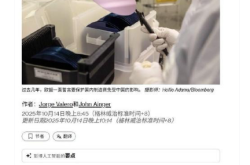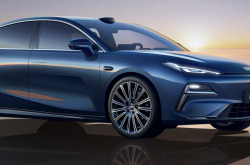From Connectivity to Autonomous Decision-Making: Broadcom Integrated Collaborates with Ecological Partners to Define a New Era of Intelligent IoT Connectivity
![]() 05/27 2025
05/27 2025
![]() 605
605
The rapid evolution of artificial intelligence (AI) and the widespread adoption of the Internet of Things (IoT) are reshaping the fundamental principles of the global technology industry. AI equips devices with the capability to "think," while high-speed, stable interconnectivity forms the "nervous system" that seamlessly integrates computing power, data, and scenarios. In this transformation, chips, as the physical backbone of both, have performance and energy efficiency that directly dictate the boundaries of intelligent terminals. Broadcom Integrated (BEKEN), with two decades of deep cultivation in wireless communication chips, employs "low power consumption, high reliability, and robust security" as its technical core and continues to provide the foundational power for the AIoT era – from connection chips supporting millisecond-level response, to edge AI chips integrated with NPUs, to intelligent hardware solutions incorporating large models. Broadcom is leveraging the power of "chips" to propel consumer electronics, smart homes, industrial control, the Internet of Vehicles, and other scenarios from mere "connectivity" to "autonomy." When AI algorithms and interconnection protocols are deeply integrated at the chip level, a more efficient and inclusive intelligent world becomes attainable.

On May 24, Broadcom Integrated held the "Twenty Years of Chip Innovation, Infinite Intelligent Connectivity" 2025 new product launch event and 20th anniversary celebration in Shanghai, reflecting on its 20-year journey from an innovator in wireless communication chips to a core supplier of global intelligent IoT solutions.
Looking back at the 20-year journey: from technological cultivation to ecological leadership
Twenty years of relentless effort! As a pioneer in wireless communication and intelligent IoT chip design, Broadcom Integrated has surged ahead in the technological wave of the past two decades, consistently leading the industry with innovation. After two decades of growth, the company's cumulative chip shipments have surpassed 9 billion, establishing a comprehensive technical system in fields such as WiFi, Bluetooth, radio frequency, navigation, etc. It serves over 1,000 enterprise customers worldwide, spanning 22 industries including smart homes, consumer electronics, and industrial IoT, with products distributed in more than 190 countries and regions.
In terms of technological accumulation, Broadcom Integrated prioritizes "extreme energy efficiency," leveraging world-class RF-CMOS integrated circuit design capabilities and advanced digital signal processing technology to provide customers with high-performance, low-power SoC solutions, occupying a dominant market position in areas like IoT Wi-Fi chips and national standard ETC chips. Simultaneously, it has forged strategic partnerships with numerous renowned domestic and international home appliance manufacturers and Internet companies to achieve seamless software ecosystem integration, constructing a comprehensive ecological chain from chip design to application implementation.

Xiao Jian, Director of the Construction and Management Office of Shanghai Zhangjiang Science City and Director of the Zhangjiang Administration of the China (Shanghai) Pilot Free Trade Zone Management Committee, sang high praise for Broadcom Integrated's 20-year journey from a technology innovation enterprise to an industry benchmark in his speech, emphasizing its significant contribution to Zhangjiang Science City and China's semiconductor industry.
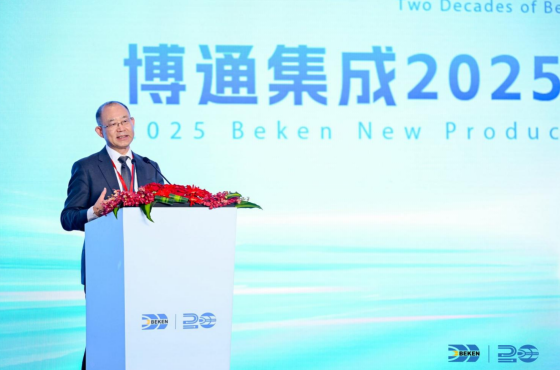
Zhao Haijun, Co-CEO of SMIC, reviewed Broadcom Integrated's 20-year development trajectory from an industry perspective, attributing its success to "perseverance and foresight" – both deep cultivation of technology and a keen grasp of the opportunities presented by the convergence of AI and semiconductors. Drawing on SMIC's experience, he emphasized that the semiconductor industry requires "teamwork, long-term vision, and optimism." Facing the explosion in capacity demand driven by AI, he called on the industry to promote technology inclusivity with an open-source spirit, while encouraging Broadcom Integrated to continue leading innovation and assuming a leading role in the "golden age" of semiconductors, achieving breakthroughs in both technology and business.

Subsequently, Dai Wenyuan, Chairman of Fourth Paradigm (Paradigm Group), reviewed the leapfrog development of AI technology from "behind the scenes" to "in front of the stage" in his keynote speech, underscoring the importance of the integration of large models and chips for industrial reconstruction. He noted that the evolution of AI has shifted from simple algorithm optimization to deep integration with edge-side hardware, citing the smart glasses collaboration between Paradigm Group and Broadcom Integrated as an example to demonstrate the potential of AI in real-time image recognition, voice interaction, and productivity tools. Dai Wenyuan further proposed that the next decade will be a golden period for the "synergistic explosion of chip computing power and algorithms," and that enterprises need to integrate cloud capabilities and edge-side computing power through an open ecosystem to promote the "AI-as-a-Service" model in finance, supply chains, and other fields. He urged the industry to focus on "inclusive AI hardware" and empower small and medium-sized enterprises with lower-threshold technological solutions, jointly constructing a new intelligent ecosystem with "chips as the foundation and algorithms as the wings."

Tang Haiqing, Secretary of the Party Branch and Director of the Tianfeng Securities Research Institute, Chief Analyst of the Technology Industry, and think tank expert at the China International Engineering Consulting Corporation under the National Development and Reform Commission, delved into the new opportunities in the chip market in the new era of AIoT in his speech. He reviewed the development history of AI, pointing out that AI is a technological and industrial revolution that occurs once every two decades. Since the introduction of ChatGPT in 2022, global technology giants have increased their investment, and the AI industrial chain has welcomed new transformations and opportunities from infrastructure to applications and from the cloud to the edge. The explosion on the inference side has further driven the growth in demand for edge AI, and the rise of advanced AI micro-models and edge AI development ecosystems has made AI a new UI, reshaping human-computer interaction, and the era of application explosions has arrived.
With the advent of the AIoT era, IoT application scenarios have evolved from automation to intelligence, boasting more powerful functions and larger data volumes, giving birth to new application categories such as AI glasses, drones, and smart headphones, opening up broader market spaces. The continuous evolution of network technology, such as the introduction of RedCap technology in the 5G-A phase, provides high-speed, low-latency, and low-cost connectivity support for the IoT, driving rapid growth in the number of IoT connections. Tang Haiqing noted that 2025 is expected to be the first year of the explosion of edge AI, and the "AI + hardware" model will be widely applied in multiple fields. Leading enterprises are deploying AIoT, bringing new opportunities for chip manufacturers, including market size growth, continuous improvement in SoC computing power, and increased demand in the WiFi chip market. Chip manufacturers like Broadcom Integrated are expected to achieve revenue and profit growth and further development under this trend.
Deep integration of low power consumption and AI drives intelligent connectivity of all things
Twenty years of innovative leadership! As the starting point for the next two decades, Broadcom Integrated launched a new generation of product matrix at this celebration, with "energy efficiency leadership and AI empowerment" as the core. Three new products, BK7259, BK7239N, and BK7236N, made a splendid debut, covering scenarios such as WiFi 6/7 communication, edge computing, and multimodal interaction. Through dual breakthroughs in hardware architecture and algorithm optimization, they address the pain points of traditional intelligent terminals in terms of power consumption, computing power, and connection stability.
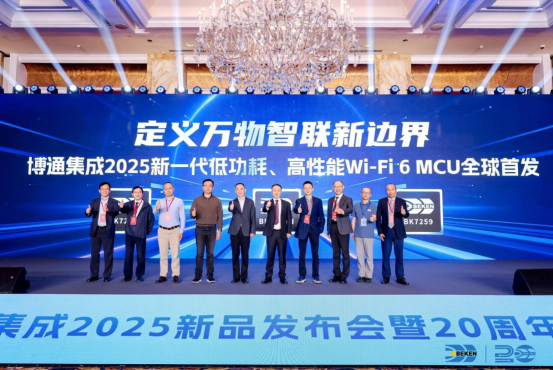
Wang Weifeng, Deputy General Manager of Broadcom Integrated, gave an in-depth introduction to the highlights and advantages of the company's new generation of low-power technology and products in his speech. First, he elaborated on the critical importance of WiFi low power consumption in numerous smart devices such as smart doorbells, smart locks, and smart watches, which have urgent low power consumption requirements to ensure long battery life. Broadcom Integrated achieves extreme energy efficiency in digital circuits through a multi-dimensional power management strategy, including multi-voltage domain division, dynamic voltage and frequency scaling (DVFS), the application of multi-threshold voltage transistors, and innovative solutions such as Retention Cells and low-power SRAM, achieving extreme energy efficiency through multi-dimensional optimization. Additionally, the ultra-low-voltage design of the RF receive chain and the digital Polar transmit chain architecture further enhance the energy efficiency and performance of the communication module.
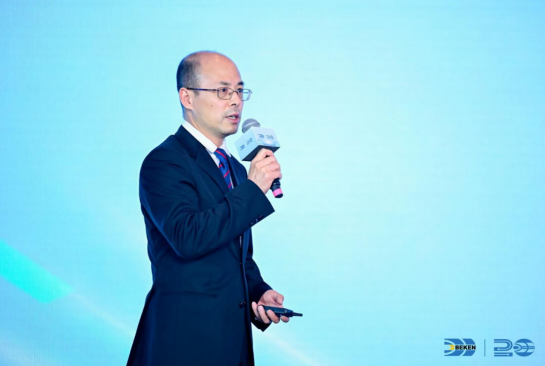
Furthermore, Wang Weifeng elaborated on the ultra-low-voltage design and optimization topology strategy of the RF receive chain, such as current reuse, Gm/ID optimization, and intelligent power gating technologies, which significantly reduce the power consumption of the RF section. Simultaneously, the innovative transmitter architecture employs a digital Polar transmit chain, solving the problem of low efficiency in transmitting non-constant envelope signals with traditional I/Q modulation, achieving high efficiency across a wide power range. Finally, for video processing, Broadcom Integrated proposes a DRAM-Less video processing solution, utilizing an RTOS architecture to reshape the ISP and H264 encoding architecture, eliminating the dependence on external DRAM, thereby further reducing power consumption. These technologies have been applied in new-generation products such as BK7255, BK7236N, and BK7259, pushing these products to new heights in terms of low power consumption and high performance. These three ultra-low-power new products are tailored for different scenarios:
BK7259, as a benchmark for AIoT computing power, is the first Wi-Fi 6 MCU to integrate the ARM Ethos-U65 microNPU, infusing superior computing power and exceptional energy efficiency into edge intelligence applications, ushering in a new era of "brains" for smart devices, enabling complex AI computations to be effortlessly realized on edge devices, and accelerating the process of intellectualization in fields such as intelligent transportation and smart homes.
BK7239N fully unleashes the enormous potential of dual-band Wi-Fi 6, with a leading low-power design that consumes only 15mW for 5.8GHz reception, effortlessly handling complex network environments, ensuring a seamless dual-band experience, providing users with smooth switching between different frequency bands, and enjoying high-speed, stable network connections, meeting the network needs of smart home devices in multi-device connection scenarios.
BK7236N makes a stunning debut as the Wi-Fi 6 MCU with the world's lowest power consumption, with an RF receiver power consumption as low as 13mW, enabling long-lasting IoT applications and significantly extending the battery life of IoT devices. For IoT terminal devices such as sensors and monitors that require long-term stable operation, this is a revolutionary technological breakthrough that expands the application scenarios and usage range of IoT devices.
Finally, Wang Weifeng introduced the next-generation technology roadmap, including Wi-Fi 7 chips supporting arbitrary dual-band STR (Space-Time Resource) and MLO (Multi-Link Operation) in 2/5/6GHz, as well as a multi-mode sensing solution integrating UWB phased array radar and Wi-Fi CS (Carrier Sensing). The former can achieve a throughput of 720Mbps and millisecond-level switching, while the latter detects human presence, distance, and posture through radar waves, planned for application in smart homes, elderly care monitoring, and other scenarios, driving intelligent devices to evolve from "passive response" to "active perception".
These new products not only uphold Broadcom Integrated's traditional strengths in the field of low power consumption but also provide integrated solutions of "edge intelligence + stable connection" for terminals such as smart watches, AR glasses, and industrial robots through the integration of AI computing power and communication technology, propelling the IoT from "connectivity of all things" to "intelligent connectivity of all things".
From chips to scenarios, constructing a closed-loop intelligent IoT ecosystem
As AI technology is integrated into the IoT realm, it has emerged as a promising frontier that many intelligent hardware manufacturers are vigorously exploring. However, merely offering algorithms is insufficient for achieving business monetization. Instead, providing chips tailored to specific scenarios can forge an ecosystem that integrates hardware and software, thereby achieving competitive breakthroughs in segmented markets. For chip manufacturers like Broadcom Integrated, the support of hardware products further broadens the scope and depth of their capabilities. Evolving from merely supplying components to delivering holistic solutions, Broadcom Integrated leverages chip technology as its core, collaborating with ecosystem partners to expand multifaceted applications and realize the profound integration of "hardware + software + scenarios" for the intelligent connectivity of all things.
For AI to empower all industries, it is imperative to address the mismatch between supply and demand by conducting tailored analyses for the pain points and specific business processes of individual enterprises.
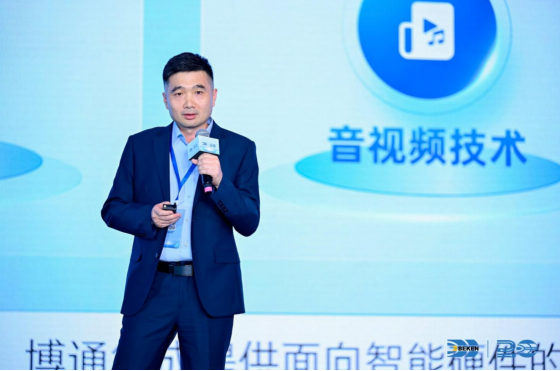
In his speech on "Broadcom Integrated Empowering Smart Living," Lv Xueli, General Manager of Broadcom Integrated Ansaio, proposed that future intelligent terminals must possess four core competencies: wireless connectivity, cloud interaction, multimodal processing, and centralized power management. Building on 20 years of technological expertise, Broadcom Integrated has introduced comprehensive solutions encompassing fields such as smart homes and industrial control. For instance, its innovative "Bluetooth relay + Wi-Fi hotspot" solution for outdoor equipment can reduce mobile phone energy consumption by 90%. In the realm of data security, it employs hardware-level isolation design and Arm TrustZone technology to offer bank-grade protection for scenarios like payments and access control.
Lv Xueli further showcased the outcomes of ecological collaborations: the BK7258 chip-based smart electrical lighting system supports multimodal control via voice, gestures, and apps, and has been integrated into over 5 million households. The AI quality inspection development board for industrial scenarios integrates machine learning algorithms, enabling customers to transition from prototype design to mass production verification within 24 hours, enhancing efficiency by 80%. He emphasized that through a unified software development architecture and a robust third-party component library, Broadcom helps developers reduce product time-to-market to 30 days, truly embodying "technology inclusivity".

Zhu Yifei, General Manager of Broadcom Integrated Shenzhen, took "Smart Living from Morning to Night" as the narrative thread, vividly demonstrating the comprehensive scene penetration capabilities of Broadcom chips. At 7 am, a smart speaker equipped with the BK7255 chip wakes users up with an ultra-low power consumption of 60μA and broadcasts real-time weather and schedule updates. During commuting, the BK3633 chip-integrated Bluetooth digital car key achieves seamless unlocking through national cryptographic algorithms with a response speed of 0.3 seconds. In office settings, the BK7257-powered smart door lock supports 3D structured light face recognition with a false recognition rate of less than one in a million, processing security data locally through edge computing to eliminate privacy leakage risks.
In the realm of innovative hardware, Zhu Yifei highlighted smart glasses and electric two-wheeler solutions. The BK7257 chip-powered AR glasses are only 7mm thick, support 6 hours of HD video recording and real-time object recognition, and consume 40% less power compared to competitors. The BK7258 solution developed for electric vehicles integrates BeiDou positioning, driving recorder, and cloud anti-theft functions, enhancing battery life by 25% through dynamic power management. He concluded, "Broadcom's 'Core' strength lies not just in technical parameters but in enabling the leap from 'functional use' to 'seamless experience' for users."
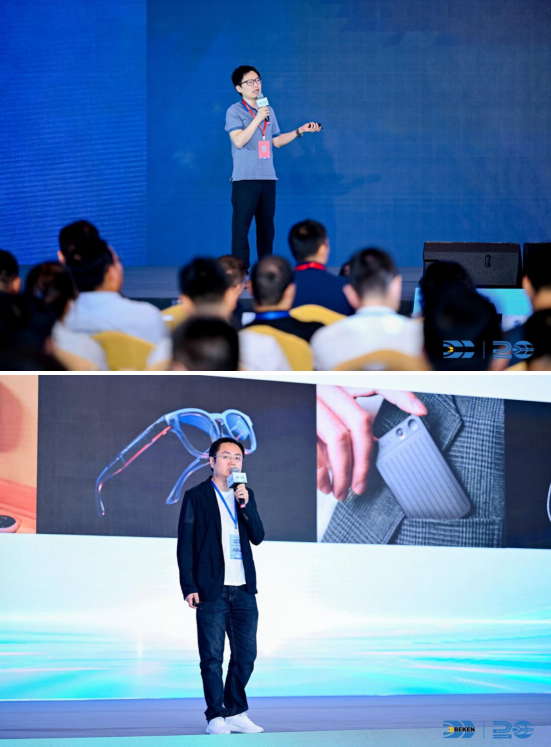
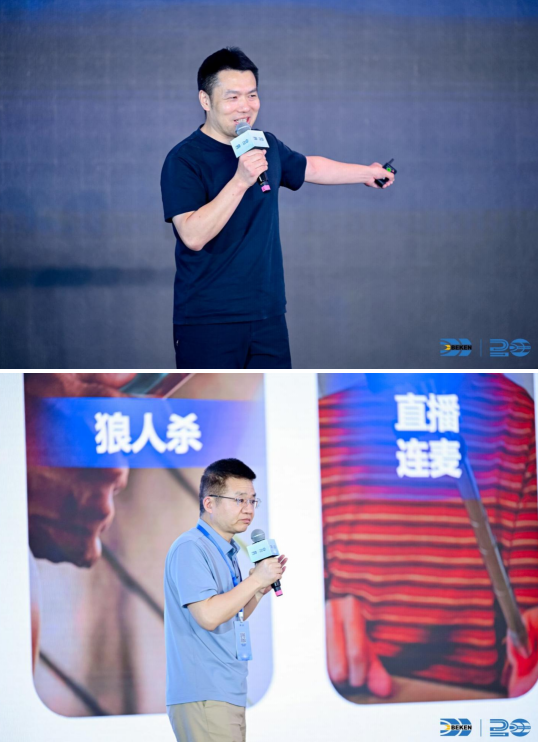

Furthermore, representatives from ecological partners such as Xing Xiaoci, Director of Volcano Engine's Large Model Product Solutions, Long Yimin, General Manager of Tencent Cloud's Audio-Video IoT, Li Xian, Deputy General Manager of Kaadas, Liu Bin, Chief Operating Officer of Agora, and Xu Ang, Vice President of Jixian Technology, shared their in-depth collaborations with Broadcom, exploring novel models that integrate AI large models with hardware to drive the application of smart hardware products across various scenarios including education, entertainment, and home. Broadcom's extensive coverage and successful cases in these smart hardware fields further underscore its ecological closed-loop capabilities spanning from "chip to scenario." Whether it's rapid empowerment on the industrial front or ultimate experiences on the consumer side, Broadcom consistently adopts an open and cooperative attitude, collaborating with partners to propel the implementation of AIoT technology, making smart living accessible to all.

At the celebration, Broadcom showcased its comprehensive product line, encompassing wireless AI chips, wireless audio-visual chips, WiFi connectivity chips, Bluetooth low-power chips, intelligent transportation chips, and intelligent navigation chips. These chip products not only cater to a wide array of smart device application scenarios but also reflect Broadcom's outstanding achievements in technological innovation and product development. Additionally, the company's new generation of low-power technology products garnered significant attention, offering more energy-efficient and effective solutions for smart devices. To enhance the interactive experience for attendees, the event featured an immersive experience session, allowing guests to personally witness the superior performance and innovative applications of Broadcom's chips in various smart devices, experiencing the boundless allure brought forth by technology. This session not only provided guests with an intuitive understanding of Broadcom's product advantages but also sparked new ideas and directions for future collaborations and innovations.
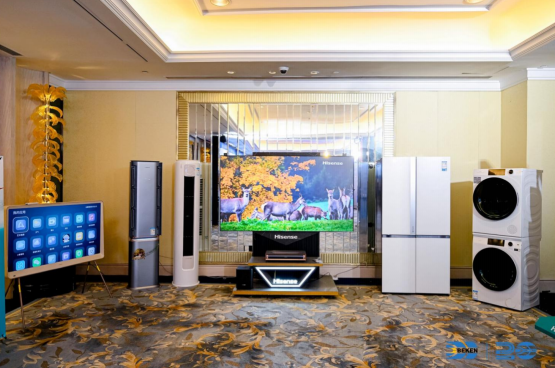
With 20 years of technological accumulation and ecological layout, Broadcom has demonstrated its end-to-end innovation capabilities spanning from chips to scenarios. It has also transitioned AIoT from concept to reality through its strategy of "hardware foundation and ecological empowerment." With the successful conclusion of its 20th-anniversary celebration, Broadcom stands at a new starting point. Looking ahead, Broadcom will continue to uphold the innovation-driven development philosophy, collaborating with partners to jointly explore the infinite possibilities of the Internet of Things and provide superior chip products and solutions to users worldwide.



